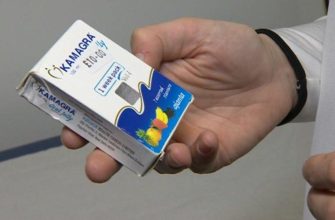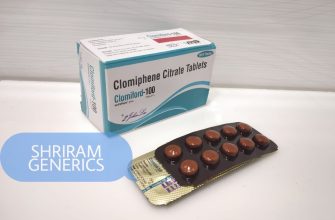You can typically expect to pay between $30 and $70 for a 20-gram tube of tretinoin 0.025% cream, without insurance. This price can fluctuate significantly based on where you purchase it and whether you opt for a generic or brand-name version. We’ve found that generic brands, such as those available through online pharmacies specializing in dermatology, often offer substantial savings.
Consult your insurance provider about prescription drug coverage. Many plans offer partial or full coverage for tretinoin, particularly if it’s prescribed for acne treatment. We advise you to always inquire about preferred pharmacies within your network, which frequently have contracted rates, leading to lower out-of-pocket costs. Don’t hesitate to ask your dermatologist for samples. They often have sample tubes available, allowing you to test the product and defer your purchase.
Explore discount programs and coupons; websites like GoodRx and SingleCare provide valuable resources to find deals on prescriptions. Always compare prices across different pharmacies, both brick-and-mortar and online, before making a purchase. Some retailers may also offer loyalty programs or special promotions that reduce the cost of tretinoin 0.025.
- Cost of Tretinoin 0.025: A Comprehensive Guide
- Factors Affecting Price
- Strategies to Reduce Costs
- What is Tretinoin 0.025?
- Average Price Range: Tretinoin 0.025
- Factors Influencing Cost
- Strategies to Reduce Expenses
- Factors Influencing Tretinoin Cost
- Brand vs. Generic
- Formulation and Strength
- Pharmacy and Location
- Insurance Coverage and Discounts
- Brand Name vs. Generic Prices
- Where to Buy Tretinoin 0.025
- Insurance Coverage for Tretinoin
- Saving Money on Tretinoin Prescriptions
- Maximizing Your Tretinoin Tube
- Investigating Insurance Coverage
- Potential Side Effects and Costs
- Is Tretinoin 0.025 Worth the Investment?
Cost of Tretinoin 0.025: A Comprehensive Guide
Expect to pay between $30 and $70 for a 20-gram tube of tretinoin 0.025% cream. This range reflects variations in pricing across different pharmacies and regions. Prices may also fluctuate based on whether you choose a brand-name product or a generic alternative.
Factors Affecting Price
Several factors influence the final cost of your tretinoin prescription. Insurance coverage plays a significant role; check your plan’s formulary to see if tretinoin is covered and what your co-pay will be. Without insurance, generic versions are generally much cheaper than branded ones like Retin-A. Location matters, as prices can differ between pharmacies in different cities or states. Online pharmacies can sometimes offer lower prices, but ensure they are reputable and require a valid prescription. Consider using prescription discount cards from sites like GoodRx or SingleCare to potentially lower the cost.
Strategies to Reduce Costs
You can actively manage the cost of tretinoin. Ask your doctor if a generic formulation is suitable; generics offer the same active ingredient at a reduced price. Compare prices at multiple pharmacies before filling your prescription – a simple phone call can save you money. Explore patient assistance programs offered by pharmaceutical companies; you may qualify for discounts or free medication. Discuss the possibility of using tretinoin less frequently with your doctor if you find the cost prohibitive; a lower frequency may still yield results while extending the life of your tube. Remember to always follow your doctor’s directions.
What is Tretinoin 0.025?
Tretinoin 0.025 is a retinoid, a derivative of vitamin A, that treats acne and improves skin appearance. It promotes skin cell turnover, which helps unclog pores, reduce inflammation, and diminish fine lines and wrinkles. You apply it topically as a cream, gel, or lotion.
Using Tretinoin 0.025 requires consistency for visible results. Expect improvements in acne within 6-12 weeks of regular use. For anti-aging benefits, such as reduced wrinkles and improved skin texture, you’ll likely see progress after several months of consistent application.
When you begin using Tretinoin 0.025, expect some initial dryness, peeling, and redness. These side effects are normal and usually subside as your skin adapts. To minimize irritation, apply a pea-sized amount only at night. You can also start by using it every other night and gradually increase frequency as your skin tolerates it. Always wear sunscreen with SPF 30 or higher during the day, since tretinoin makes your skin more sensitive to sunlight.
Before you begin using Tretinoin 0.025, consult a dermatologist. They can assess your skin type and determine if it’s the right treatment for you. Your dermatologist can also provide personalized advice on how to incorporate it into your skincare routine and manage potential side effects.
You should avoid combining Tretinoin 0.025 with other potentially irritating products, such as benzoyl peroxide or strong exfoliating acids, unless specifically directed by your doctor. Overuse of multiple active ingredients could lead to excessive dryness and inflammation.
Average Price Range: Tretinoin 0.025
Expect to pay between $30 and $70 for a 20-gram tube of tretinoin 0.025% cream or gel, brand name or generic, without insurance. Your location and pharmacy play a significant role in this range; prices are often higher in metropolitan areas.
Factors Influencing Cost
- Brand vs. Generic: Generic versions generally cost less than brand-name products like Retin-A.
- Dosage and Quantity: Larger tube sizes may offer a better price per gram, but consider your usage to avoid waste.
- Pharmacy Location: Prices can vary considerably between pharmacies, even within the same city. Calling ahead to compare prices pays off.
- Insurance Coverage: Check your insurance formulary to determine coverage and co-pay amounts. Even with insurance, comparing cash prices might be beneficial.
- Coupons and Discounts: Websites and apps offer coupons or discount cards that bring down the cost. Search for “tretinoin coupons” online before filling your prescription.
Strategies to Reduce Expenses
- Compare Prices: Use online tools to compare prices at local pharmacies. GoodRx and SingleCare are helpful.
- Ask About Generics: Request the generic version from your doctor or pharmacist, saving you a significant amount.
- Consider Telemedicine: Online dermatology services can prescribe tretinoin, sometimes offering competitive prices and subscription options.
- Pharmacy Savings Programs: Inquire if your preferred pharmacy has a savings program that brings down prescription costs.
Remember, a prescription is needed for tretinoin. Consult a dermatologist to determine if it is the right treatment for you and to obtain a prescription.
Factors Influencing Tretinoin Cost
You’ll find that the price you pay for tretinoin 0.025 can vary significantly. Several elements affect how much you’ll spend. Understanding these can help you find better deals and plan your budget.
Brand vs. Generic
The most significant price difference often comes down to brand name versus generic versions. Brand-name tretinoin products, like Retin-A, typically cost more due to research, development, and marketing costs. Generic tretinoin offers the same active ingredient at a lower price. Ask your doctor or pharmacist about generic options; they are often just as good.
Formulation and Strength
The formulation impacts price too. Creams, gels, and lotions might have different costs depending on the manufacturing process. Furthermore, a higher concentration of tretinoin will affect price; for example, 0.05% tretinoin typically costs more than 0.025% tretinoin.
Pharmacy and Location
Different pharmacies can set their own prices. Comparison shopping between pharmacies, both local and online, can reveal significant savings. Also, your geographic location can affect prices. For example, you might find lower prices in areas with higher competition between pharmacies. Check prices at national chains like CVS and Walgreens and also smaller, independent pharmacies.
Insurance Coverage and Discounts
Your health insurance plan might cover some or all of the cost of tretinoin. Check your plan’s formulary to see if tretinoin is covered and what your copay or coinsurance will be. Many manufacturers and pharmacies also offer discount programs or coupons that can further lower your out-of-pocket expenses. Search online for manufacturer coupons before heading to the pharmacy. Patient assistance programs are another option if you meet specific income requirements.
Brand Name vs. Generic Prices
Opt for generic tretinoin 0.025% to significantly reduce your costs. Generics offer the same active ingredient and therapeutic effect as brand-name versions, but typically come at a lower price.
- Price Difference: Brand names like Retin-A can cost $80-$100 per tube, while a generic version of tretinoin 0.025% may range from $20-$40.
- Insurance Coverage: Many insurance plans favor generics. Check with your provider to see if generic tretinoin is fully covered or has a lower co-pay.
- Bioequivalence: Both brand name and generic versions must demonstrate bioequivalence, meaning they are absorbed and work in the body in the same way. The FDA regulates this.
Ask your dermatologist to prescribe the generic form directly. When you receive your prescription, double-check with the pharmacist to ensure you’re getting the generic. This simple step can help you save money without sacrificing treatment quality. Also, remember that prices can vary among pharmacies, so comparing prices online or by phone is always beneficial.
Consider using online pharmacies for added savings. Many legitimate online pharmacies offer discounted prices on both brand-name and generic medications. Always verify that the online pharmacy is accredited by the Verified Internet Pharmacy Practice Sites (VIPPS) program before making a purchase.
Where to Buy Tretinoin 0.025
You can obtain tretinoin 0.025 through a prescription from your doctor or dermatologist. Once you have a prescription, you have several options. Local pharmacies like CVS and Walgreens usually carry tretinoin, so check their prices first. Price comparison is essential, as costs can differ significantly.
Consider online pharmacies. Reputable options, such as those verified by the National Association of Boards of Pharmacy (NABP), offer convenience and sometimes lower prices. Look for VIPPS (Verified Internet Pharmacy Practice Sites) accreditation to ensure legitimacy and safety.
Some online dermatology services provide prescriptions after a virtual consultation. Services such as Curology or Nurx allow you to consult with a licensed medical provider online and, if appropriate, receive a prescription for tretinoin delivered directly to your door. This saves time and offers a streamlined experience. Be sure to research the qualifications of the providers associated with these services. Read customer reviews to get a sense of the experiences of others.
Lastly, inquire about generic options. The generic version of tretinoin is typically more affordable than brand-name options. Ask your doctor or pharmacist if a generic alternative is suitable for you and confirm its availability with your chosen pharmacy. This can significantly reduce the cost.
Insurance Coverage for Tretinoin
To determine if your insurance covers tretinoin 0.025%, directly contact your insurance provider. Check their formulary (list of covered drugs), usually accessible on their website or by phone. Look for tretinoin specifically, noting any restrictions or prior authorization requirements.
Coverage often depends on the reason for prescription. If prescribed for acne, coverage is more likely than for cosmetic uses like anti-aging. Some plans may require you to try a less costly acne treatment first before covering tretinoin. This step is sometimes called “step therapy.”
If your insurance denies coverage, ask your doctor to submit a prior authorization request, explaining the medical necessity of tretinoin in your case. Include any relevant documentation, such as photos or previous treatment failures. Additionally, explore manufacturer coupons or patient assistance programs, readily available online. These can significantly reduce your out-of-pocket cost, even without insurance coverage.
Consider using GoodRx or similar platforms to compare tretinoin prices at different pharmacies, with or without coupons. Sometimes, the cash price with a coupon might be lower than your insurance co-pay, especially for generic versions.
Remember to clarify whether your insurance covers specific brand names (like Retin-A) or only the generic version of tretinoin. Generic tretinoin is usually more affordable and more commonly covered.
Saving Money on Tretinoin Prescriptions
Ask your dermatologist about generic tretinoin; it offers the same benefits as brand-name options at a significantly lower cost. Prices for generic tretinoin 0.025% cream can range from $20 to $50 for a 20-gram tube, while brand-name versions may cost upwards of $100. Consider using discount cards like GoodRx or SingleCare. These cards frequently offer substantial savings on prescription medications, sometimes reducing the price of tretinoin by 30-70%.
Check online pharmacies, but ensure they are reputable and licensed. Look for certifications like the Verified Internet Pharmacy Practice Sites (VIPPS) seal. Some online pharmacies may offer lower prices than brick-and-mortar stores due to reduced overhead. Compare prices from several online sources before committing.
Inquire about manufacturer coupons or patient assistance programs directly from the pharmaceutical company that makes the brand-name version. These programs are frequently available for individuals who meet specific income requirements or lack adequate insurance coverage.
Discuss alternative formulations or strengths with your doctor. Sometimes, a different strength, like 0.05%, may be more economical per unit dose, particularly if you can use a smaller amount. Similarly, explore whether the gel, cream, or liquid formulation is cheapest in your region.
Maximizing Your Tretinoin Tube
Use only a pea-sized amount for your entire face. More isn’t always better, and excessive application can lead to irritation and wasted product. Properly storing your tretinoin, away from direct sunlight and heat, can also extend its shelf life.
Investigating Insurance Coverage
Confirm if your health insurance plan covers tretinoin. If it does, understand your copay and deductible amounts. Sometimes, paying out-of-pocket with a discount card is cheaper than using your insurance, particularly if you have a high deductible. Check both options. Always get the price before presenting any coupon.
Potential Side Effects and Costs
Expect some initial skin dryness, redness, and peeling when you begin using tretinoin 0.025%. These effects usually lessen after a few weeks as your skin adjusts. You can mitigate these side effects by applying a light, non-comedogenic moisturizer twice daily.
The cost of tretinoin 0.025% varies depending on the formulation (cream, gel, lotion), brand (generic versus brand-name), and pharmacy. Generic tretinoin 0.025% cream might cost between $20 and $60 for a 20-gram tube without insurance. Brand-name versions, like Retin-A, can easily exceed $100 for the same amount. Using a prescription savings card or checking prices at different pharmacies can lower your out-of-pocket expenses.
Consider the potential need for additional products to manage side effects. You might want to purchase a gentle cleanser (around $10-$20), a hydrating serum (ranging from $15 to $40), and a broad-spectrum sunscreen with SPF 30 or higher (approximately $10-$30). Sunscreen is crucial as tretinoin increases your skin’s sensitivity to the sun.
Factor in the cost of your doctor’s visits. If you require a dermatologist appointment to obtain a prescription, this expense should be included. The cost of a dermatology visit can vary significantly, often falling between $75 and $200, depending on your insurance coverage and location.
If your insurance covers tretinoin, your copay might be significantly lower than the retail price. Always check with your insurance provider to determine your coverage and potential costs. You might find that a 3-month supply is more cost-effective than purchasing it monthly.
Is Tretinoin 0.025 Worth the Investment?
Yes, tretinoin 0.025% is a worthwhile investment for many seeking improved skin. You’ll find it addresses various concerns effectively, especially when compared to over-the-counter alternatives. Expect to see noticeable improvements in acne reduction and skin texture within 12 weeks of consistent use. For many, the improved skin clarity boosts confidence, offsetting the cost of the medication.
Consider tretinoin 0.025% if you’re struggling with persistent mild to moderate acne, fine lines, or uneven skin tone. While you may experience initial dryness or peeling, these side effects generally subside with proper moisturizing and gradual introduction to your routine (e.g., applying every other night initially).
To maximize your investment, adhere to the prescribed application instructions and use a broad-spectrum sunscreen with an SPF of 30 or higher during the day. Consistency is key; skipping applications will delay results. Also, remember to inform your doctor about any other skincare products you are using to avoid potential interactions.
Here’s a comparison illustrating potential costs and benefits:
| Factor | Tretinoin 0.025% | Over-the-Counter Alternative (e.g., Salicylic Acid Cleanser) |
|---|---|---|
| Acne Reduction | Significant improvement, targets both surface and deeper blemishes. | May improve mild acne; effectiveness varies by product. |
| Fine Lines & Texture | Reduces appearance of fine lines, improves skin texture and tone. | Minimal impact on fine lines; may slightly improve surface texture. |
| Cost (Monthly) | $20 – $70 (depending on insurance and pharmacy) | $10 – $30 (depending on brand and product) |
| Doctor Visit | Requires a prescription, potentially incurring consultation fees. | Available without a prescription. |
| Potential Side Effects | Dryness, peeling, redness (temporary). | Less severe, but may still cause dryness or irritation. |
Ultimately, weigh the potential benefits against the cost and commitment required. The controlled strength and proven efficacy of tretinoin 0.025% often justify the expenditure for those seeking a comprehensive solution for acne and skin rejuvenation under medical supervision.






